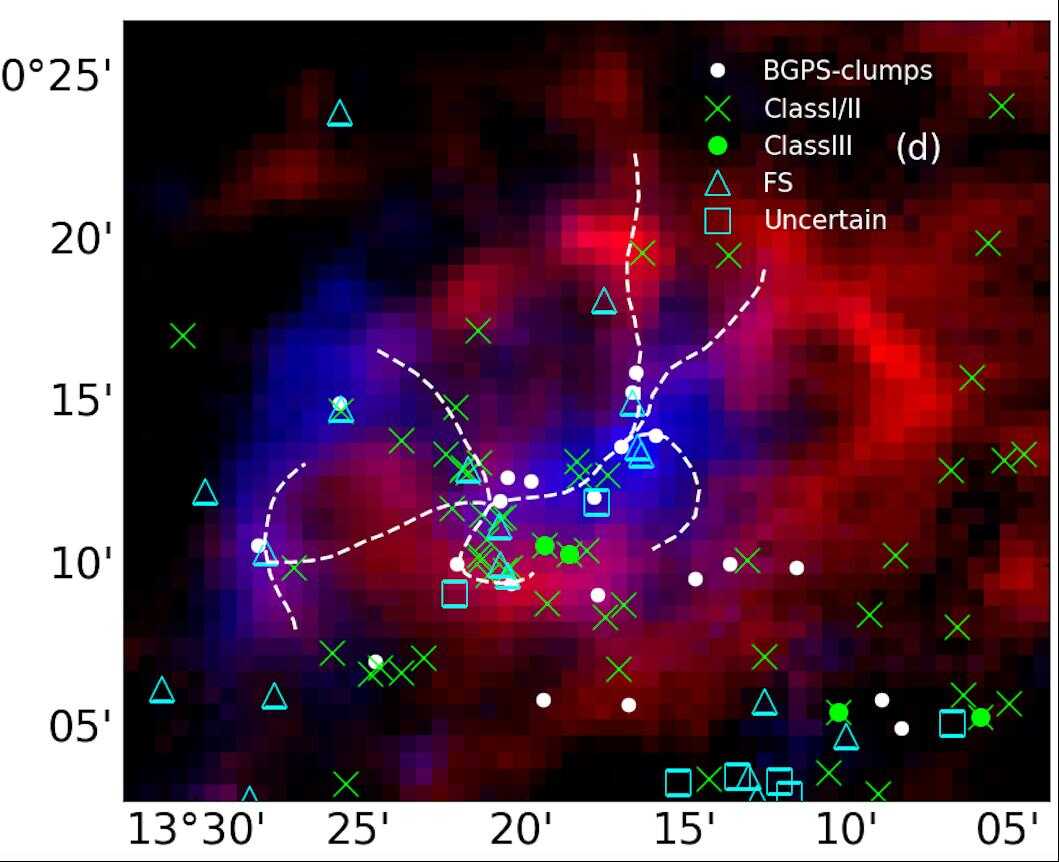
A recent study led by Dilda Berdikhan, a Ph.D. student from the Xinjiang Astronomical Observatory (XAO) of the Chinese Academy of Sciences, has uncovered compelling evidence that a cloud-cloud collision has triggered active star formation in the molecular cloud G013.313+0.193 (hereafter G013.313) in the Milky Way.
The findings were published in Astronomy & Astrophysics.
Using observational data from the NanShan 26-m Radio Telescope and the Delingha 13.7-m millimetre-wavelength telescope of Purple Mountain Observatory, the researchers investigated the dynamics and star-forming conditions within this complex molecular environment. Their results provide fresh observational support for the theory that cloud-cloud collisions serve as a key trigger for massive star formation.
Star formation is one of the key processes in galaxy and interstellar medium evolution, and collisions between molecular clouds are considered an important mechanism for triggering massive star formation. G013.313 molecular cloud, located on the Galactic plane, exhibits a complex molecular cloud environment. However, previous studies on its dynamical properties and star formation mechanisms have been very limited.
The researchers identified two molecular clouds with different velocities (G013.313-blue and G013.313-red). Their spatial distributions show complementary "U-shaped" and "S-shaped" structures, along with "bridge" features in velocity space. These observational evidences indicate that a cloud-cloud collision has occurred in the G013.313 region.
Through detailed analysis, the researchers estimated the collision timescale to be approximately 0.35-1.03 million years. This timescale matches the ages of young stellar objects (YSOs) in the region, suggesting that the cloud-cloud collision likely triggered star formation.
They also found that the collision-compressed gas region has formed a hub-filament system (HFS), where multiple filamentary structures converge toward high-density hub regions. This configuration provides ideal conditions for massive star formation.
Furthermore, the detection of 21 dense clumps (BGPS clumps) and 94 young stellar objects (YSOs) in this region confirms that G013.313 is an active star-forming region.
This study not only provides new observational evidence supporting the theory that cloud-cloud collisions trigger star formation but also highlights the crucial role of HFS in the star formation process. The results enhance our understanding of massive star and cluster formation mechanisms in the Milky Way and offer valuable insights for future related studies.

The distribution of the two colliding molecular clouds (with blue and red indicating the blue-shifted and red-shifted clouds, respectively) and the star formation activity. (Image by XAO)

86-10-68597521 (day)
86-10-68597289 (night)

52 Sanlihe Rd., Xicheng District,
Beijing, China (100864)

